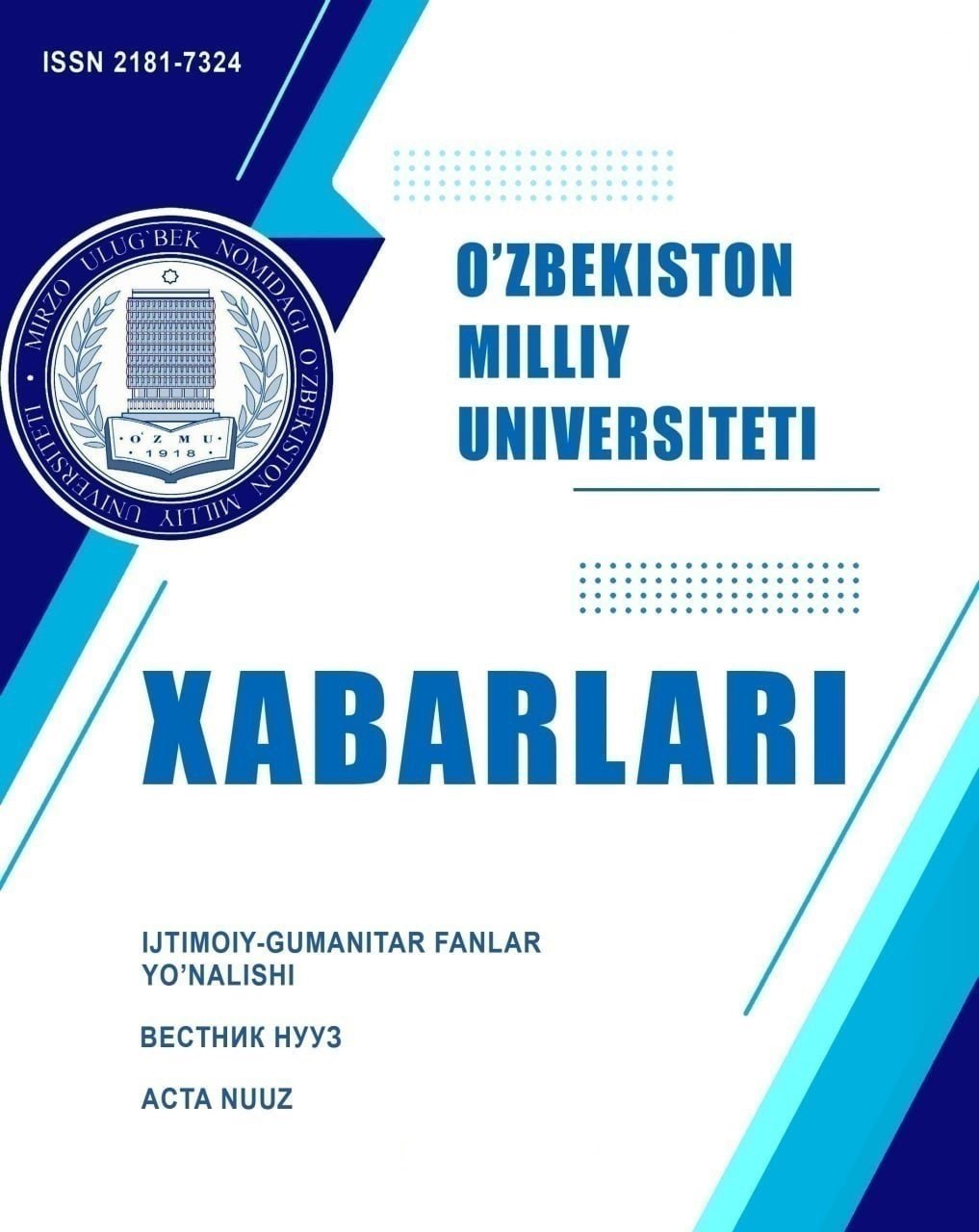INGLIZ TILIDA YURIDIK DISKURSNI TARJIMA QILISH MUAMMOSI
"Maqola"
Huquqiy matnlar bilan ishlashda nafaqat o‘zbek va ingliz huquqiy dalillarining tipik asosiy belgilarini, balki har bir davlatning huquqiy tizimlarida mavjud farqlarni ham hisobga olish zarur. Bir tildan ikkinchi tilga tarjima qilishda huquqiy hujjatlar mazmunini to‘g‘ri yetkazish muhim ahamiyatga ega. Ingliz tili yuridik lug‘atining tipik asosiy xususiyatlarini aniqlash va yuridik matnlarni tarjima qilishda yuzaga keladigan muammolarni hal qilish metodologiyasini ta’minlash maqsadida mualliflar sintaktik tahlil, leksik tahlil, qiyosiy tarjima va qiyosiy tarjimani o‘rganadilar. usulini qo'llash. O‘rganilgan materiallarga o‘ziga xos leksemalar (umumiy qo‘llaniladigan so‘zlar, jargon, lotin so‘zlari, qisqartmalar), haqiqiy Britaniya va Amerika huquqiy manbalari, shu jumladan yuridik hujjatlar namuna bo‘la oladi.
References
2. Anesa P. Towards a Conceptualization of Legal English as a Lingua Franca? International Journal of English Linguistics. 2019. p. 14-21.
3. Burukina O. A. Translation of English legal documents. Moscow: Nauka. 2005
4. Chiknaverova K. G. Using semantization as a means of propedeutics of learners’ lexical errors in the course of teaching legal English at university. Yazyk i Kul’tura, 2009. p. 47, 277–300.
5. Harold D. Lasswell & Myers S. McDougal, Trends in Theories About Law: The Conception of Relevant Intellectual Tasks, in jurisprudence for a free society: studies in law, science and policy. New Haven Press 1992. p. 203, 212-17, 220-23, 231-35, 236-42.
6. Kredens K. J. & Drugan J. Translation in Superdiverse Legal Contexts. Blackledge (Eds.), The Routledge Handbook of Language and Superdiversity. Routledge, 2018. p. 411-425.
7. Matulewska A. Legal and LSP Linguistics and Translation: Asian Languages’ Perspectives. International Journal for the Semiotics of Law, 2019. p.32
8. Monzo E. Translation and Culture in Legal Settings and Institutions. The Routledge Handbook of Translation and Culture. 2018. p. 463-482
9. Perez-Perdomo R. Lost in Translation? Latin American Lawyers-Students in American Law Schools: Transplants and Globalization. Onati Socio-Legal Series, 9(6), 2019. p. 1078–1096.
10. Sammut I. The translation of EU trademarks – a special type of
translation. International Journal of Legal Discourse, 3(1), 2018. p. 133–158.
11. Van Gerwen H. Studying the forms and functions of legal translations in history: the case of 19th - century Belgium. Translation and Interpreting : The International Journal of Translation and Interpreting Research, 11(2), 2018. p. 106–118.
12. William N., Phillip P. An Historical and Critical Introduction to The Legal Process, in the legal process: basic problems in the making and application of law li, (Hart et al ed., 1994)
13. Zgonnikova A. A. Clichéd phrases in business discourse. Professional communication: topical issues of linguistics and methodology, 2014. p. 7, 32-41.


.jpg)

.png)







